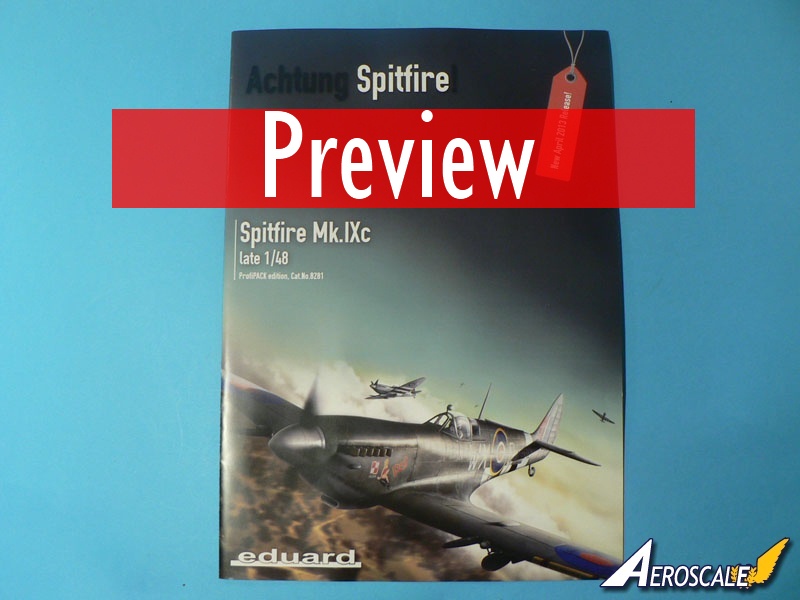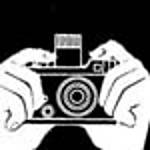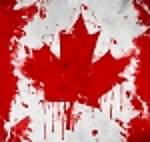From Eduard's January Newsletter:
"Here comes Eduardís
new Spitfire Mk.IXc. This kit is the best of all we have done up to now, and I dare say, the best of 48 scale kit production anywhere.... period. This is another product of our construction and engineering philosophy, that has in large part been defined by input we have received and analyzed from our 1/48th scale Fw 190s and Bf 110s. The result is a compact model with a very precisely rendered surface, and a reproduction level of the same new standard covering the visible interior details of the cockpit, landing gear and wheel wells.
We are not uncovering the engine or the armament, nor are we treating their respective mountings. For those modelers that do like to go down that road, we are also preparing Brassin sets to enable them to do that. Their use is already taken into consideration in the plastic model and will greatly accommodate their integration with the kit. The Brassin sets
will cover the engine including cowls, armament installations, and a resin cockpit that will include the radio set. The list of PE brass will include the flaps.
But, back to the model. In the interest of keeping this as short as possible, I would compare this kit with our 48th scale Bf 109E. As noted earlier, there will be no engine, and there will be a fine rendering of the rivet patterns that we have shown an ability to do in a very effective and subdued manner. There will be roughly a third more rivets. Thatís because if actual fact, the Spitfire had about a third more rivets than the Bf 109E. So, even here, we were careful with the riveting, something that was a tough choice to make with the Spitfire in terms of what to leave in and what to leave out. The so-called rivet counters and makers of riveting tools will have their own opinions, but our goal is to produce a product that will promote the notion that Eduard kits donít need riveting, nor puttying for that matter. And since we are at puttying, I have read about Spitfires being puttied over to cover the rivets, which should not be visible. I donít know. It may well be so, but all of the Spitfires we looked at, the rivets were visible.
Itís not going to be as simple a build as all of the above suggests, though. It will include five sprue sets containing a total of 207 parts, 14 of which will be clear. For a compact single-engined fighter, thatís a pretty good number,
and may lead you to think that this will be over-engineered, a la our 1/48 Bf 110.
But it wonít be. There are a lot of parts, but many are optional and so duplicated or even triplicated to allow for those options. This is to allow for as much variation of the type as possible. So, a lot of what you get will be doubled up for use as needed. This will include the tail surfaces, nose section with upper and lower parts, exhausts, carburetor intakes, landing gear legs, their covers, and wheels (specifically tires). Wheel hubs will cover three variations, same as the cannon muzzles. These are hollowed out, same as the exhaust pipes. There will be two types of wingtips and
two types of gunsights. There will also be two types of tailwheels, one as a single unit, and the other with a separate wheel. Probably the most noteworthy variation of parts involves the cockpit doors. This was a curved feature
on the actual aircraft that tended to straighten out on opening. In fact, this is a feature that was not limited to the doors of the Spitfire, but we did make two sets of these doors, one maintaining the consistent fuselage curvature
when closed, and a straighter version for those who will wish to display it in the open position. Keeping just one set was not deemed the way to go, which you will surely understand.
Most will probably go for the open variation, others closed but with an open canopy. Many pilots had a graphic on their doors, such as Smikís ĎDU-Ní, which carried kill marks on the
door, and will be included as a marking option in our kit. A lot of modelers will not want to open the door and obliterate a display of kill marks! And closing this cockpit would be
a sin! There will be two variations of the canopy, one open and one closed. The open canopy version will open the door to the shape purists to complain. Itís a tad wider than the
closed canopy variant, but this is to allow it to fit over the spine in the open position. This is typical for this type of layout, and doesnít seem to bother too many people. What is
more important is what lies beneath the canopy. This is where things happen! The cockpit is made up of some 38 detail parts. Again, this can come across as somewhat complicated,
but it really isnít. The parts are accurate, fine in their detail, and fit where they are supposed to. There is no flash, there is no seam to ruin their look, and there are no ejection pin marks where they would be visible. The ejection
pin marks have been a strict no-no in our company from the beginning, and is one of the things that make us unique among manufacturers.
The mold lines have been eliminated for some time now, and there is no need to mention flash. The cockpit is the result of a lot of painstaking work, the best we have produced to date, and is designed to compete even with the best resin sets available. Itís true that the technology used to produce this kit raises the number of parts in the kit, but it should
also be noted that it allows for the increased number of parts. It all also goes together like Lego bricks and the end result is thoroughly convincing. Adding a bit of PE to this cockpit will practically bring it to life. The story is applicable to the landing gear as well. The well is unexpectedly well detailed, even if it is at the expense of segmenting the walls of it into several parts. But we ensured
that all parts sit precisely as they should, resulting in an unsurpassed assembly in 1/48th scale. The same goes for the standard achieved with the landing gear itself, although it
is a fairly conventional affair. It includes the struts, tires, separate hubs, covers and, in newer versions, oleo scissors that all come together in a sub assembly that is far from boring! Details abound in this Spitfire kit. On the exhausts, the propeller, bomb racks, the bombs themselves, on the control surfaces.... everywhere. We have gone into unexpected and unprecedented territory in detail.
For example, the machine gun muzzles are visible in the openings in the wings. These were often covered with tape for aerodynamic reasons on the real thing, and we have managed
to simulate this as well. The tape would tighten over the opening to become concave. Itís a small but awesome detail, and care must be taken to not ruin it during assembly. I think
Iíll stop here. To sum up, the Eduard Spitfire is so far the most extensively thought out kit we have ever produced. Way back when it was going to be a 1/32nd scale project, we
intently studied several accessible Spitfires. The founding piece of reference that we used for this project was the book by Paul Montfort,in which he created a very significant study
of the subject. We added a bit to it, and we studied and verified the drawings diligently. The few small details that were missing we added. All in all, the amount of work expended
on one project has been immense, but the end result will certainly speak for itself! But, what about camouflage schemes? MH712, WX-D of No. 302 (Polish) Squadron, MJ296,
DU-N of No. 312 (Czechoslovak) Squadron flown by Otto Smik, MJ586, LO-D of No. 602 Squadron flown by Pierre Clostermann, the silver MJ250 UF-O from Italy, and ML135 YO-D flown by J. Billing of No. 401 Squadron. Hopefully this is a mix that will satisfy pretty much everyone. Those who would like to model different Spits will need to source them elsewhere, of which there is absolutely no shortage, or they can wait for our two special editions. More on them a bit later. April will also see the availability of the Overtrees concept for these as well. These will atypically be available until September.
The reason are the two special edition kits. The month will be so dominated by the Spitfire kit that there hardly seems to be any reason to complicate things with a LIMITED EDITION
kit. So weíll tone it down with a WEEKEND kit of the F6F-3 Hellcat in 1/48th scale, which is another re-edition of a sold out kit.
On August 13, we will be celebrating the anniversary of the return of our pilots from England after the end of the Second World War. We would like to commemorate this milestone with the release of a kit exclusively dedicated to the event in the
form of a Spitfire Mk. IX of the Czechoslovak Air Force. It will emulate the Royal Class idea, in that it will contain two complete kits and will cover the use of the Spit by the Czechs and Slovaks during World War Two and after in
Czechoslovakia. It will contain the usual photoetched brass and Brassin parts. The defining part of this specific release will be in the decal options. It will include a wide assortment of Spitfire Mk.IXs flown by Czechoslovak pilots in
the war and after. How many Spitfires will be represented, or if the options will include users that these were eventually passed on to, is not at the moment certain.
Similarly, it has not yet been definitively determined the method of delivering these kits, and we are discussing this with the Czech postal service. Ideally, we would like the service to deliver these exactly on August 13th, at least within their jurisdiction of the Czech Republic. But because the bonus in this edition of the kit will be an exclusive postal stamp issue with an anniversary envelope (?), it would
even be nice for these to be postmarked on the 13th as an alternative. The packaging as well will receive special attention, and it will commemorate the anniversary and will be
a unique feature in the industry as a whole. The basis will naturally be the box, but it will all be placed in a specially designed postal bag. Itís developing into a very attractive offer."






















 The flattened inner profile beside the bulge is interesting though.
The flattened inner profile beside the bulge is interesting though.




















































